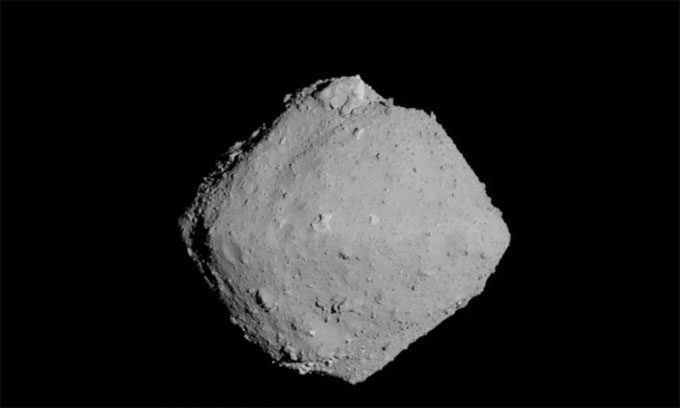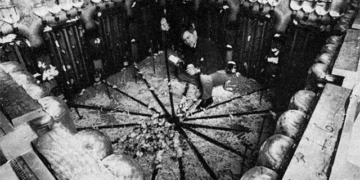Experts Announce Results of Gas Analysis from Ryugu, Indicating the Asteroid May Originate from a Distant Region of the Solar System.
Three international expert groups have published research on the gas samples brought back from Ryugu by the Japanese spacecraft Hayabusa 2, a near-Earth asteroid measuring approximately 900 meters, in 2020, as reported by Phys on October 24. These are the first gas samples from an asteroid to be returned to Earth.

Hayabusa 2 spacecraft captured the Ryugu asteroid in 2018. (Photo: ISAS/JAXA)
The first group studied the volatile components and recent surface evolution of the asteroid, publishing their results in the journal Science. The second group examined synthetic nuclear residues, while the third group provided an overview of the types of gases that Hayabusa 2 brought back. These two groups published their findings in the journal Science Advances.
The first group discovered that Ryugu still contains isotopes and rare gases from the early solar system, along with a nitrogen mixture described as similar to carbonaceous chondrite type Ivuna. They also found evidence of a rare gas produced by solar wind and another gas formed by cosmic ray irradiation. Additionally, they identified a close relationship between CI chondrites and the gases from Ryugu.
The second group found that some samples from Ryugu exhibited Fe isotopic anomalies similar to those in CI chondrite type Ivuna. They also discovered iron isotopes formed in areas devoid of carbonaceous asteroids. This suggests that Ryugu may originate from a more distant region of the solar system than previously thought. The research team posits that this asteroid could come from an area beyond the orbits of Saturn or Jupiter. They noted that the development and movement of these giant planets could destabilize planetary micro-objects, with some of these micro-objects potentially pushing material into the asteroid belt, possibly including Ryugu.
The third group identified all the gases brought back to Earth and measured the quantity of each gas. They found that a portion of the helium in the samples originated from solar wind, while another portion was absorbed from Earth’s atmosphere when Hayabusa 2 returned with the samples.
Asteroids are incredibly valuable tools for astronomers to understand the early solar system. Many scientists believe that the building blocks of life on Earth originated from meteorites from elsewhere. Therefore, studying the composition of asteroids can help humanity gain insights into how life emerged on Earth and even search for places where life might exist.


















































